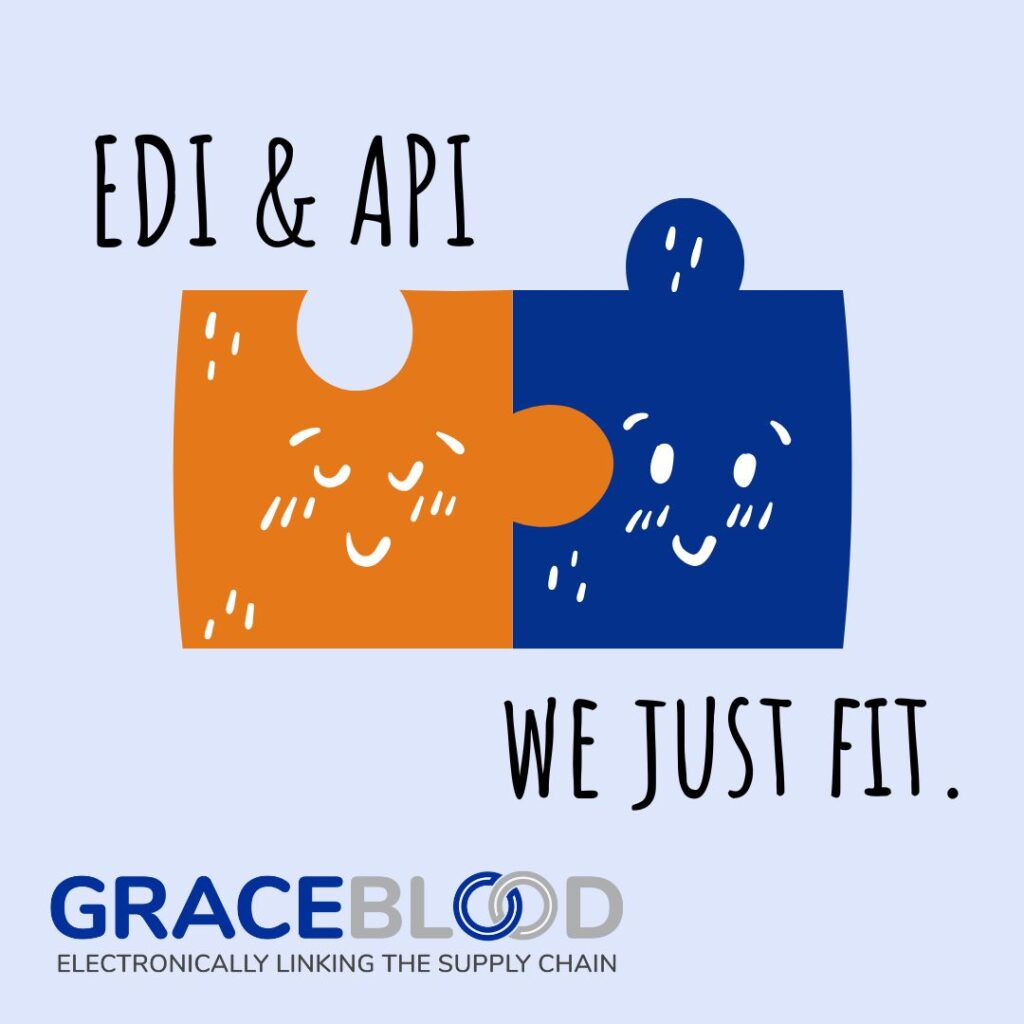 The vast, inherent complexity of the manufacturing industry’s supply chain makes being able to efficiently exchange data between stakeholders, from suppliers and manufacturers to distributors and retailers, integral to success in a fast-paced and highly competitive market.
The vast, inherent complexity of the manufacturing industry’s supply chain makes being able to efficiently exchange data between stakeholders, from suppliers and manufacturers to distributors and retailers, integral to success in a fast-paced and highly competitive market.
Electronic Data Interchange (EDI), developed in the 1960s as a common standard for machine-readable business data exchange, performs a vital role today in everything from managing inventory levels, tracking production processes, handling supply chain logistics, and satisfying customers all across the supply chain.
You know how the old saying goes—a chain is only as strong as its weakest link. When you use EDI to its full potential, your supply chain has no weak links, and your manufacturing enterprise unlocks the speed, accuracy, and cost-effectiveness you need to keep up in today’s manufacturing landscape. Let’s get started and dive into five ways EDI strengthens the modern industrial manufacturing supply chain!
What is EDI in the Manufacturing Industry?
EDI facilitates efficient data interchange by removing manual data entry and paper-based processes from your supply chain operations and replacing them with real-time data exchange using standardized formats. With EDI in your supply chain, it’s easy to exchange documents such as purchase orders, invoices, shipping notices, and inventory updates in a standardized format.
EDI in manufacturing enhances data accuracy, increases operational efficiency, accelerates supply chain cycles, and fosters stronger collaboration between stakeholders throughout your business and your trading partners.
In the manufacturing industry, EDI consists of a set of interlinked components that ensure timely, accurate data transfer between stakeholders throughout the industrial supply chain:
- Standardized message formats, such as ANSI X12 or EDIFACT, that define the structure and content of various business documents, such as purchase orders, invoices, or shipment notices
- Translation and EDI mapping software that converts human-readable documents into standardized machine-readable EDI documents and vise versa
- Secure communication protocols such as AS2, FTP, or SFTP to securely transmit EDI messages over the internet or private networks
- Data validation and error handling systems to manage potential data entry errors and ensure accuracy in data transmission
- Integration with ERP systems to facilitate automated, efficient data flow between different business processes
- Security measures such as data encryption, digital signatures, and user authentication to protect your business’s and your trading partners’ sensitive information
- Audit trails, reporting, and monitoring tools to track the movements of documents, optimize the data exchange process, and ensure compliance with any relevant data exchange regulations
What You Get When You Transform Manufacturing With EDI
When you take advantage of EDI in your supply chain, you gain access to a wide range of benefits for your business and your trading partners, including:
- Increased efficiency
- Reduced errors
- Faster transaction processing
- Enhanced supply chain visibility
- Improved supply chain coordination
- Cost savings
- Better customer service
- Higher customer satisfaction
- Simplified regulatory compliance
- More effective inventory management
- Stronger trading partner relationships
- Efficient ERP system integration
- Competitive advantages over other companies in the manufacturing industry
This is a long list, but let’s narrow down these benefits and look at five ways EDI can help make your supply chain virtually unbreakable:
How Using EDI in Manufacturing Strengthens Your Supply Chain
Using EDI in the manufacturing industry is simply non-negotiable these days. If you’re not using it, you’re relying on inefficient manual data entry and exchange methods for your company that are costing you time and money—and, most importantly, keeping doors to trading partners who can help you grow your business firmly shut.
Let’s take a look at five of the ways using EDI to automate data exchange in the manufacturing industry streamlines your operations, saves on money and labor, grows your supply chain network, and sets your business up for success in the highly competitive manufacturing sector.
1. Increased Efficiency and Cost Savings
By automating the exchange of invoices, purchase orders, shipment notices, and other essential business documents, EDI eliminates the need for slow, often error-prone manual data entry. EDI transactions are also faster, resulting in a more efficient, streamlined, and accurate exchange of vital business data free of human errors and delays.
As a result, your billing and fulfillment personnel have less time to spend on tedious busy work and more to spend on high-value work that will grow your company, saving you both time and labor costs.
2. Improved Supply Chain Collaboration
Utilizing EDI means that you and your manufacturing industry supply chain partners speak the same language. Automated data exchange through standardized processes means you reap the rewards of seamless and real-time communication between suppliers, distributors, partners, and other stakeholders. With real-time visibility into critical data such as inventory levels, shipments, and production status, when your supply chain situation changes, you can pivot on a dime and make the most of it.
EDI in manufacturing also empowers you and your trading partners to accurately and quickly schedule, forecast, plan, and coordinate your operations in the manufacturing industry, thanks to a constant flow of accurate, up-to-date information on supply and demand from across your trading partner network. This means reducing lead times, minimizing the risk of lost or delayed shipments, and improving customer satisfaction.
With EDI helping you efficiently communicate your production schedules, material requirements, capacity constraints, and other factors, you can take advantage of better planning, resource allocation, and production optimization to meet changing market demands. Surprise is a part of life, but with EDI, you’ll have the tools to see surprises coming and adapt to them before they can catch you flat-footed.
3. Enhanced Data Accuracy and Quality
EDI has been standardized since the 1960s, making it easy for EDI trading partners to seamlessly and accurately exchange critical data. By using EDI in your supply chain, you ensure accurate and consistent data exchange by minimizing manual errors such as transcription errors, as well as data discrepancies that can result from using less widely adopted digital business document formats.
Due to EDI’s facilitation of secure and structured data exchange between your business and your manufacturing supply chain partners, you can rest easy that data loss or corruption is far less likely to slow you down. With modern EDI’s error handling capabilities, when discrepancies or transcription errors do occur, they can be quickly and easily fixed before they have a chance to become a bigger headache down the line.
4. Improving Inventory Management and Just-In-Time (JIT) Delivery
Just-In-Time (JIT) delivery is just about everywhere these days. You, your trading partners, and just about everybody else in the manufacturing ecosystem depend on getting what you need in the nick of time, every time.
Thriving in a world driven by getting everything you need just in time means being able to provide purchase order processing, order fulfillment, shipment notices, and effective coordination with your supply chain partners on a moment’s notice—all things EDI in the manufacturing industry enables.
Inventory management is crucial to thriving in a just-in-time world. With EDI, you get real-time visibility into inventory levels across your supply chain, giving you and your trading partners plenty of opportunities to optimize stock levels, reduce excess inventory, and make informed snap decisions based on current demand and supply trends.
5. Compliance with Industry Standards and Regulations
In order to ensure the secure and consistent exchange of data between your manufacturing partners, EDI makes adherence to data transmission standards such as ANSI X12 and EDIFACT as well as encryption protocols easy.
Some of your document exchange processes may also have to meet various quality standards set forth by regulatory bodies, such as ISO standards, that encourage efficiency, accuracy, and security in your manufacturing supply chain processes. This is literally what EDI was made for, making it a powerful tool for ISO compliance!
Make the Most of the Manufacturing Supply Chain With GraceBlood EDI
Ultimately, EDI in the manufacturing industry performs a vital role in fostering collaboration, increasing efficiency, and creating a more agile and responsive supply chain ecosystem. In today’s ever-changing manufacturing industry, it’s sink or swim, and EDI is an indispensable tool for making your organization a sturdy and seaworthy sailing vessel.
Got questions about the best way to implement EDI in your business? We’ve got answers. Contact us today to speak to an EDI expert and get started.








